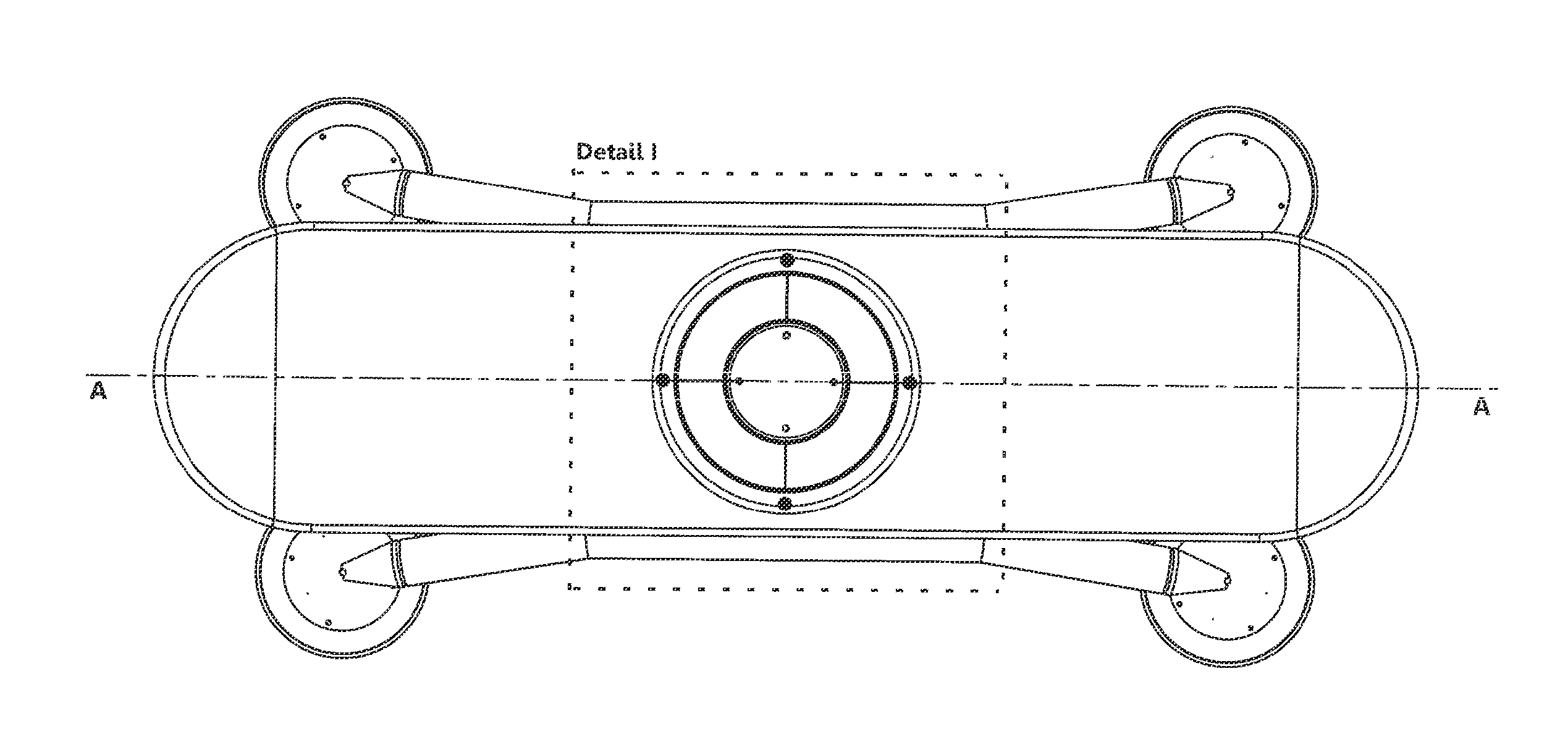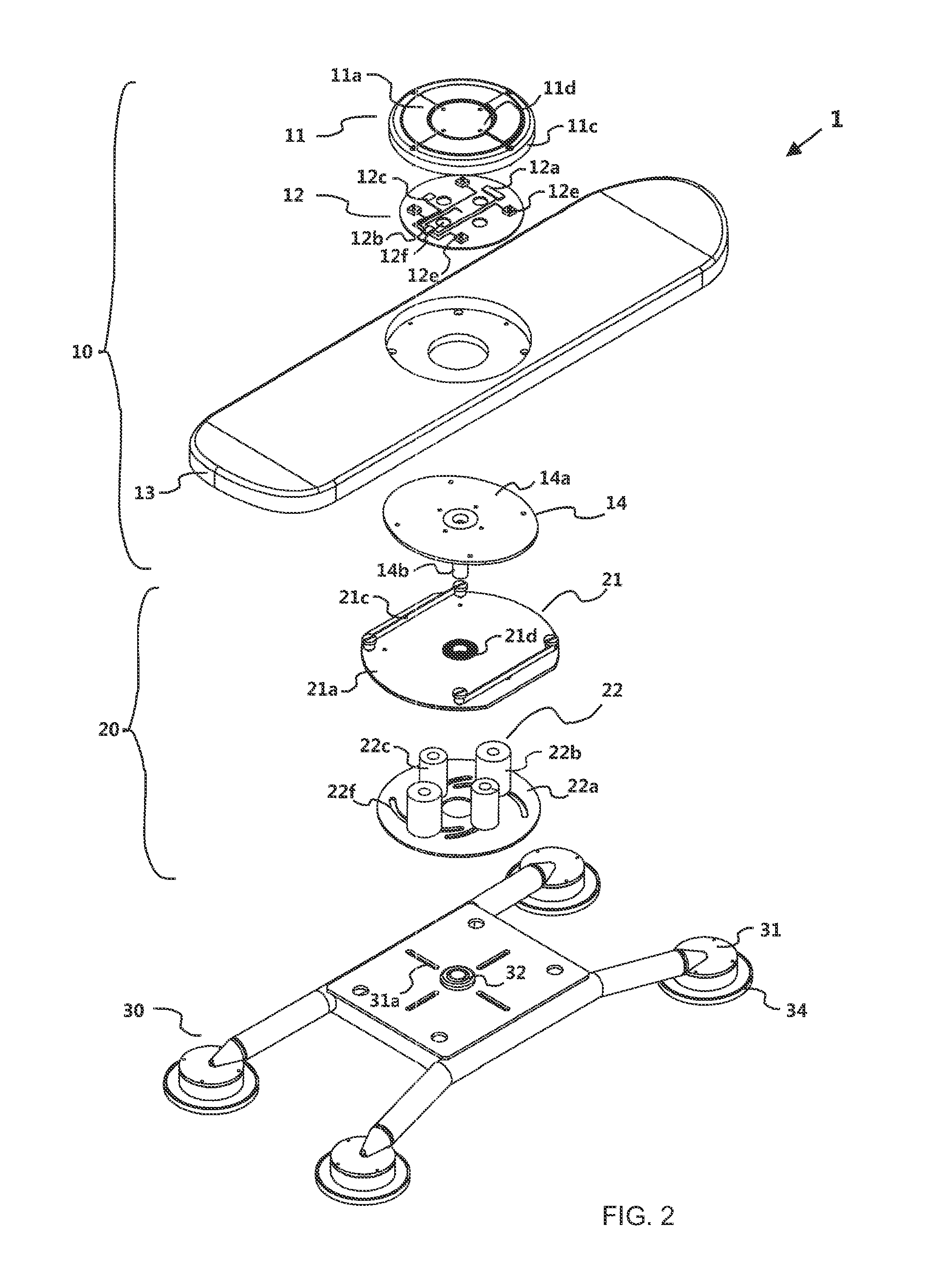Device for balance exercises and balance games using variable restoring forces
a technology of restoring force and balance, applied in the field of balance exercise and balance games, can solve the problems of limited maximum tilt angle, increased restoring force, sensor apparatus, etc., and achieve the effect of limiting functionality, limiting functionality, and maximum flexibility
- Summary
- Abstract
- Description
- Claims
- Application Information
AI Technical Summary
Benefits of technology
Problems solved by technology
Method used
Image
Examples
Embodiment Construction
[0098]The DYNAMIC BOARD is labeled very generally with the number 1 in FIG. 1 and FIG. 2. It is made up of three main assemblies, namely support part 10, restoring apparatus 20, and base part 30 (see FIG. 2).
[0099]Support part 10 encompasses platform 13, button unit 11, electronics unit 12, and carrier plate 14 with bearing pin 14b. Carrier plate 14 with bearing pin 14b is made up of an elliptically shaped carrier plate 14a and the bearing pin 14b fixedly connected thereto, bearing pin 14b being aligned at the center point of the elliptical carrier plate 14a. The center point of the elliptical carrier plate 14a is defined by the intersection of the two axes of symmetry of the ellipse. Platform 13 is bolted to carrier plate 14a.
[0100]Electronics unit 12 is made up of motion sensor unit 12a, processor unit 12b, interface unit 12c for wireless data exchange, and the battery (not depicted). Motion sensor unit 12a involves commercially usual electronic measurement systems, preferably mi...
PUM
 Login to View More
Login to View More Abstract
Description
Claims
Application Information
 Login to View More
Login to View More - R&D
- Intellectual Property
- Life Sciences
- Materials
- Tech Scout
- Unparalleled Data Quality
- Higher Quality Content
- 60% Fewer Hallucinations
Browse by: Latest US Patents, China's latest patents, Technical Efficacy Thesaurus, Application Domain, Technology Topic, Popular Technical Reports.
© 2025 PatSnap. All rights reserved.Legal|Privacy policy|Modern Slavery Act Transparency Statement|Sitemap|About US| Contact US: help@patsnap.com



